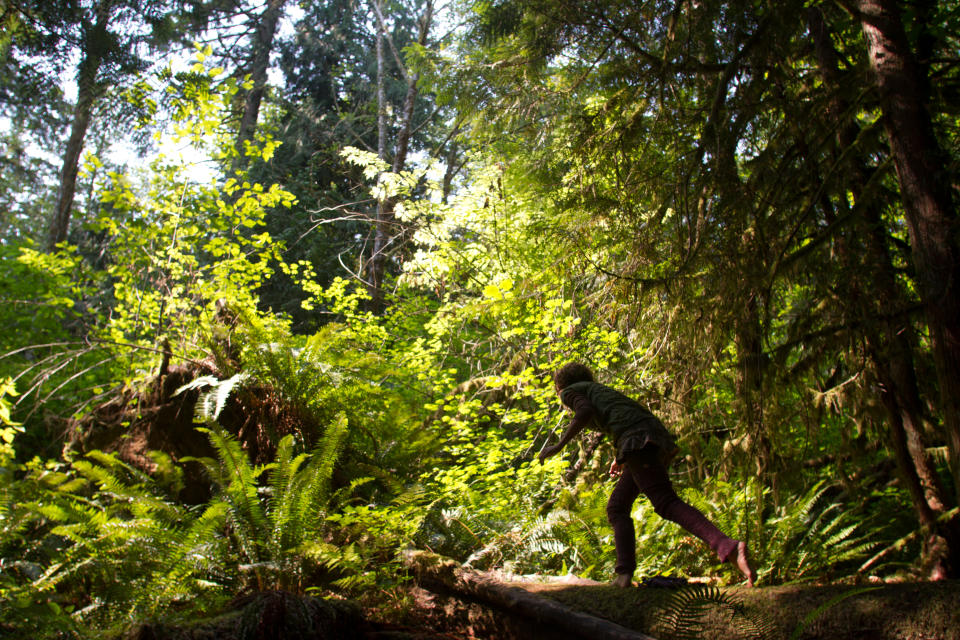Spending time with trees really will improve your health

Did you know you could get sick if you don’t have enough access to nature? Yes, it’s true. There is even a medical term of it – psychoterratic.
An Australian professor of sustainability Glenn Albrecht created the term to define the psychological trauma you can experience if you suffer from a disconnection from nature.
READ MORE:
Tips for sustainable travel and the best eco-friendly hotels to stay at
How the Income Eco Run is advocating zero-waste conservation
Women On Top: Female tailor Sheryl Yeo on her custom garment label 3EIGHTH
Opinion: Allan Wu’s thoughts on co-parenting, prioritising and being open with his children
According to Prof Albrecht even just running your fingers through the soil of your favourite indoor plant can not only chill you out, it can also help boost your immune system. Apparently the soil microbiome helps to support our physical and mental wellbeing. Which is great news for all of us who are #plantfluencers.
Not only has one professor coined a new term, the entire Japanese medical system agrees that humans are suffering from psychoterratic, and have created an new type of medical practice called ‘forest medicine’ to help us deal with it.
Forest Medicine has even proven that trees do have healing powers. In 1982 the concept of Forest Bathing was established as part of Japan’s national public health programme because spending time in a forest can ‘lower heart rate and blood pressure, reduce stress hormone production, boost the immune system, and improve overall feelings of wellbeing’.

Trees fix people
Trees are known to have antimicrobial oils – phytoncides – that protect trees from germs, and can also benefit humans. These oils the trees automatically release can not only do all of the things mentioned above, they can also ‘improve sleep and creativity; and may even help fight cancer and depression’, according to Dr Qing Li, a physician and chairman of the Japanese Society for Forest Medicine who is publishing a book all about it.
The Japanese government has already spent about US$4 million on researching the benefits of Forest Bathing with Dr Li and his colleagues at Nippon Medical School, and the country now has ‘62 designated therapeutic woods’ where about 5 million people visit every year in an attempt to get some natural healing.

How to get natural healing from Forest Bathing
While Japan has designated places for Forest Bathing, you can gain similar health benefits from spending time in any green space.
Unlike the harsh lines of the city, with advertisements and bright lights and colours, when you are in a green space – a forest, a wood, a city park, or even a home full of plants – your gaze will ‘soften and open’ so that you are aware but not tense according to Stephen Kaplan, a psychologist from the University of Michigan.
Once you have opened your eyes to seeing in a softer way, you then need to wander around the trees – it’s not exercise like hiking – it’s more of an old fashioned stoll. You shouldn’t be forcing yourself to look at anything in particular, just gaze around.
Open your ears to the different sounds like birds and the wind through tree branches, and breathe deeply to take in the natural scents.
As for how long you should bathe in the forest? Well four hours is considered best, but even two hours will do. In fact, while Dr Li suggests spending as much time in the forest as possible, he also thinks that we will also benefit from even just a few minutes watching a single tree.
View this post on Instagram
A post shared by Nicholas Tan 😄 (@thesparklingstar) on Jan 19, 2015 at 4:03am PST
Best places for Forest Bathing
In Singapore:
301 Neo Tiew Cres, Singapore 718925
Comprised of three parks – Mount Faber, Telok Blangah Hill Park and the Kent Ridge Park
Hindhede Dr, Singapore 589318
In Japan:
The national tourism organisation can help you plan a Forest Bathing tour in one of Japan’s many stunning national parks. Go to:
www.jnto.org.au/park-yourself-in-nature-forest-bathing-in-japan for more information.
You can choose from:
Chubu-Sangaku National Park (Honshu)
Yakushima National Park (Kyushu)
Daisetsuzan National Park (Hokkaido)
Shikoku Karst Prefectural Natural Park (Shikoku)


